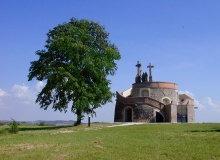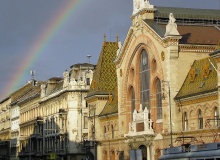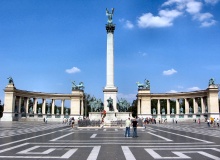Hungary
Hungary – with its striking city of Budapest, remote villages, gorgeous wine regions is a country that is easy and pleasurable to explore.
Hungary might not be what you expect from an eastern European country. Because it opened its borders to the West before many of its neighbors, it also had a head start on hospitality, welcoming visitors with its rich and varied cuisine, gorgeous wine regions and steamy thermal spas. From the striking capital of Budapest, curving along the grand Danube, to its remote villages, known for their superb folk art, Hungary's attractions are easy and pleasurable to explore.
When interest in traveling to eastern Europe began to increase, the growth at first put a strain on Hungary's tourism infrastructure. However, in recent years, Budapest and many other areas have countered the surge in tourism with a greater supply of hotels. In fact, Budapest has the largest number of first-class hotels of any eastern European capital, which is why it has developed into an important city for regional business. If big-city travel isn't what you're after, Lake Balaton is ideal for water-lovers, wine enthusiasts will want to visit Villany or Tokaj, and Hortobagy attracts those seeking traditional Hungarian culture. There is also a lot of first-class equestrian tourism throughout the country. Hungary is the smoothest introduction to travel in eastern Europe, and despite its increasing modernization, it remains as exotic and appealing as its traditional folk melodies.


Budapest
Budapest may be the capital of the landlocked country, but it's far from dry. In fact, Budapest's most seductive element is water. It springs from underground wells, filling Ottoman, baroque and art-nouveau pools. It flows through the city in the broad and meandering Danube River, dividing Buda and Pest in yin-yang fashion. It even provides welcome relief after a bowl of hot paprika-spiced goulash. With the Buda Hills to the west and the start of the Great Plain to the east, Budapest is the most beautiful city in central Europe.
Few visitors can resist the Budapest baths, but the city's allure goes beyond its spa status. As a large urban centre, Budapest manages to strike a nice balance between nature and development. Hills, islands and parks coexist with Budapest hotels, theatres, cafés, monuments and other buildings in an eclectic array of architectural styles.
Stroll along the Duna korzó, the riverside embankment on the Pest side, or across any of the Danube bridges past young couples embracing passionately. It’s then that you’ll feel the romance that, despite all attempts from both within and without to destroy it, has never died.
WHEN TO TRAVEL to Budapest
Budapest has a relatively mild climate. Nevertheless, summer temperatures often exceed 29°C, and swelteringly hot, humid days are typical in July and August. January and February are the coldest months when it can be very damp and chilly. Spring is usually mild and, especially in May, wet. Autumn is quite pleasant, with mild, cooler weather through October.




